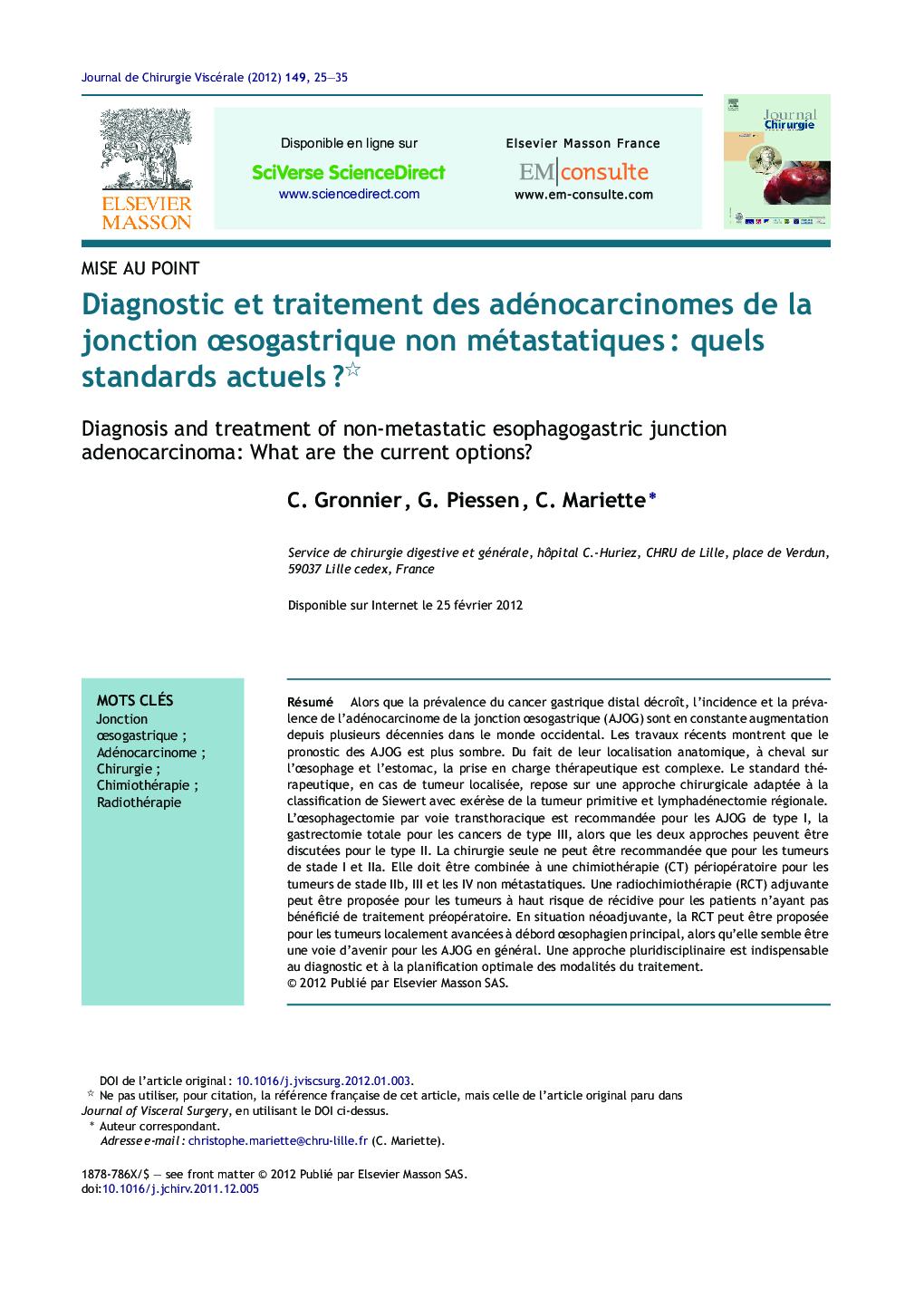| Article ID | Journal | Published Year | Pages | File Type |
|---|---|---|---|---|
| 3312065 | Journal de Chirurgie Viscérale | 2012 | 11 Pages |
Abstract
While the prevalence of distal gastric cancer is decreasing in the western world, there has been an alarming rise in the incidence of esophagogastric junction adenocarcinoma (EGJA) during recent decades. Current reports show that the prognosis of EGJA remains poor. Therapy strategies are complex due to the anatomical location of the junction between the esophagus and stomach. Surgery, based on Siewert's classification and associated with regional lymphadenectomy, is the mainstay of treatment. Transthoracic esophagectomy is recommended for type I EGJA while total gastrectomy is recommended for type III EGJA; both approaches can be considered for type II EGJA. Surgery alone can be indicated only for stage I and IIa tumors. Perioperative chemotherapy should be considered for stage IIb, III and non-metastatic stage IV tumors. Adjuvant chemoradiation can be proposed for tumors with high-risk of recurrence in the absence of neoadjuvant therapy. Neoadjuvant chemoradiation can be proposed for predominantly esophageal EGJA, and might well become a standard treatment for all EGJA tumors in the near future. A multidisciplinary approach is essential for optimal diagnosis and management.
Keywords
Related Topics
Health Sciences
Medicine and Dentistry
Gastroenterology
Authors
C. Gronnier, G. Piessen, C. Mariette,
